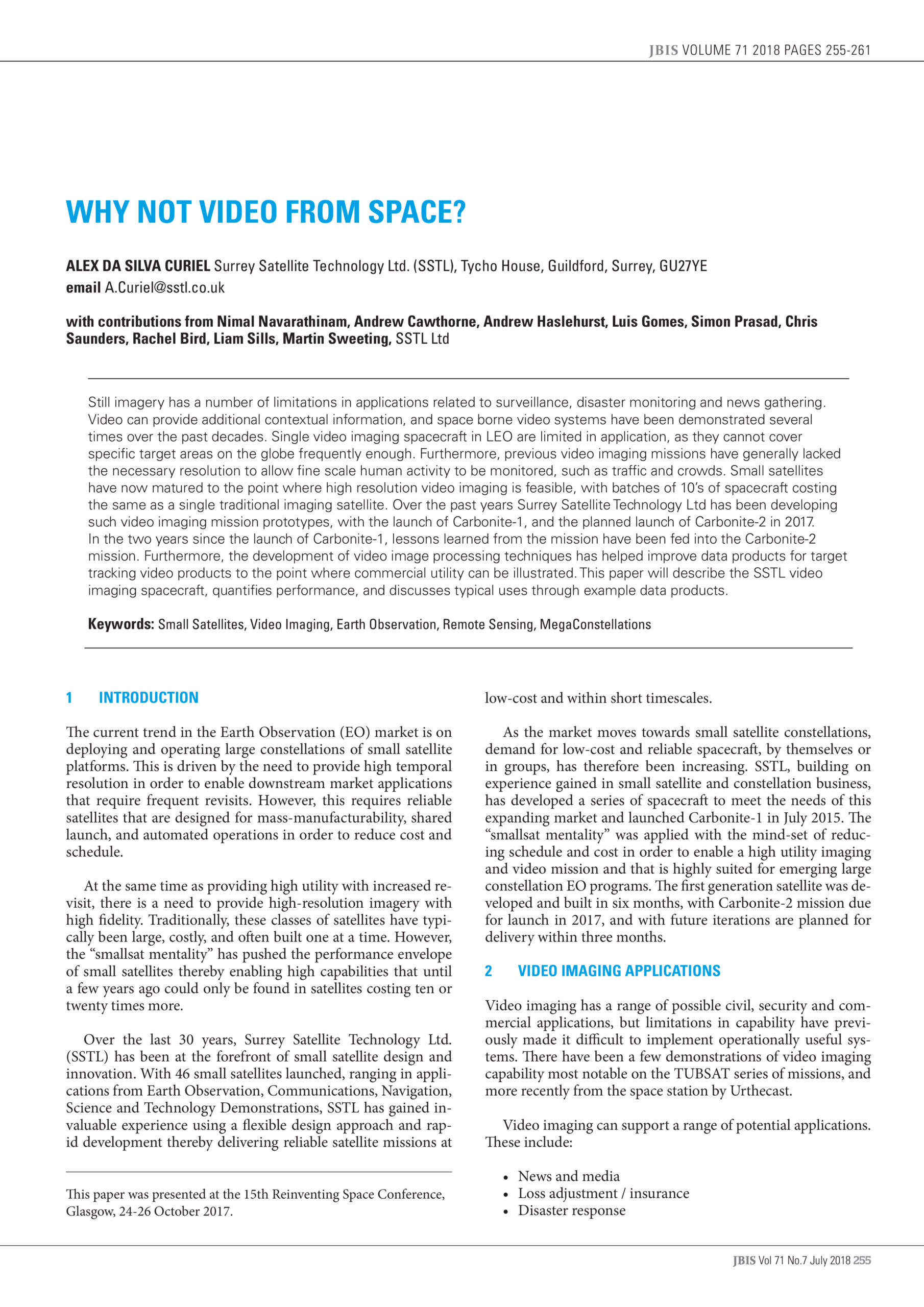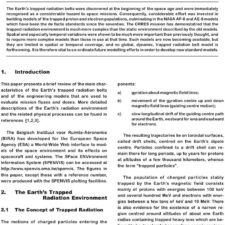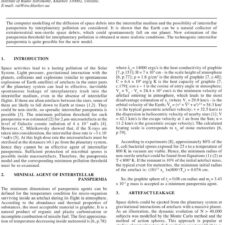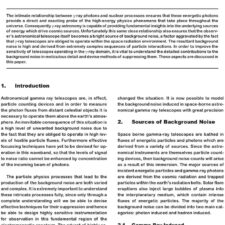Why Not Video from Space?
£5.00
A. Da Silva Curiel et al. (2018), JBIS, 71, pp.255-261
Refcode: 2018.71.255
Keywords: Small Satellites, Video Imaging, Earth Observation, Remote Sensing, MegaConstellations
Abstract:
with contributions from Nimal Navarathinam, Andrew Cawthorne, Andrew Haslehurst, Luis Gomes, Simon Prasad, Chris Saunders, Rachel Bird, Liam Sills, Martin Sweeting, SSTL Ltd Still imagery has a number of limitations in applications related to surveillance, disaster monitoring and news gathering. Video can provide additional contextual information, and space borne video systems have been demonstrated several times over the past decades. Single video imaging spacecraft in LEO are limited in application, as they cannot cover specific target areas on the globe frequently enough. Furthermore, previous video imaging missions have generally lacked the necessary resolution to allow fine scale human activity to be monitored, such as traffic and crowds. Small satellites have now matured to the point where high resolution video imaging is feasible, with batches of 10’s of spacecraft costing the same as a single traditional imaging satellite. Over the past years Surrey Satellite Technology Ltd has been developing such video imaging mission prototypes, with the launch of Carbonite-1, and the planned launch of Carbonite-2 in 2017 . In the two years since the launch of Carbonite-1, lessons learned from the mission have been fed into the Carbonite-2 mission. Furthermore, the development of video image processing techniques has helped improve data products for target tracking video products to the point where commercial utility can be illustrated. This paper will describe the SSTL video imaging spacecraft, quantifies performance, and discusses typical uses through example data products.





